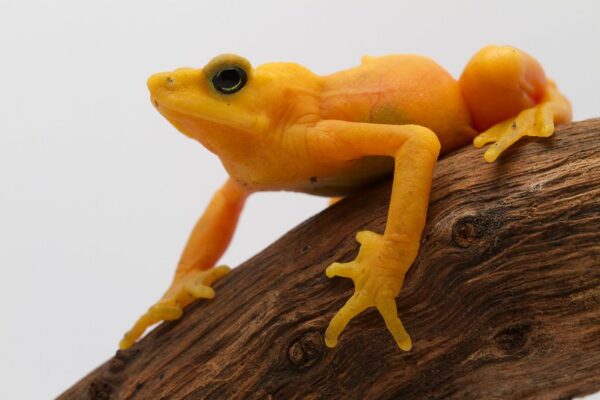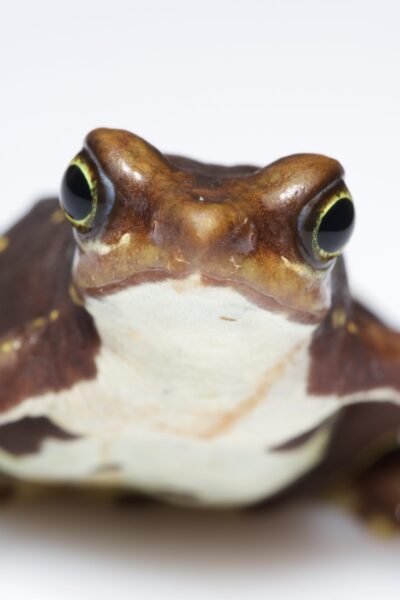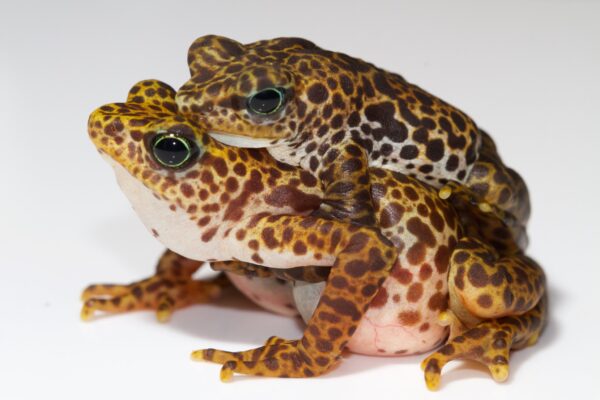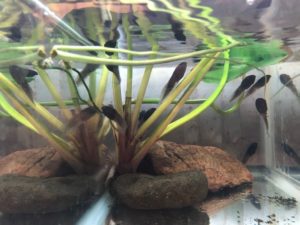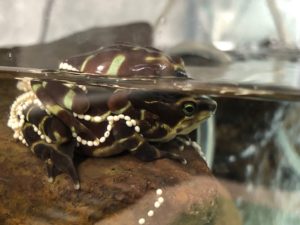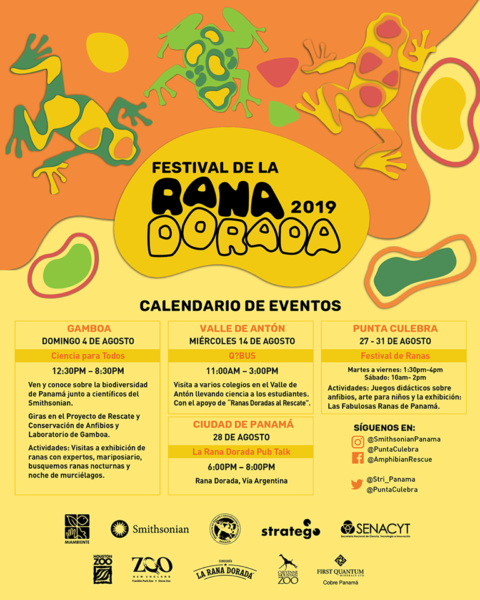Enjoy this performance of “La Rana Dorada” one of four original songs by National Geographic explorer Jani Benavides of Jacana Jacana as part of the Atelopus Survival Initiative and National Geographic Meridian Grant meeting hosted by the Fundacion Atelopus and Re:wild in Sierra Santa Marta.
Category Archives: Uncategorized
Insectarium
Construction of our new insect facility was completed and fire suppression systems installed. This new 1,600 square feet insectarium has two climate-controlled rooms that can be maintained at different temperatures, allowing a diversity of food items with varying sizes and nutritional properties to meet the needs of our diverse amphibian collection. A huge thanks to the STRI Office of Facilities and Engineering who oversaw this project and to the many individual donors, the Cheyenne Mountain Zoo, Zoo New England, the Houston Zoo, the Holtzman Foundation, the Shared Earth Foundation for enabling us to complete it.
Under the leadership of Nancy Fairchild and Jennifer Warren, our insect production capacity is now one of the incredible success stories of our project. There are no local sources of captive-reared insects, so we are 100% reliant on our own production and have redundant capacity to accommodate any unexpected changes in the populations of the various springtails, fruitflies, crickets, pantry moths, soldier flies, cockroaches and earthworms that we produce. This team has also conducted original research to develop gutloading propocols for springtails and demonstrated improved outcomes of juvenile frogs reared on this nutritionally supplemented prey, compared to their normal yeast-based diets.
It’s world frog day and we are celebrating Harlequin frogs!
There are more than 100 brightly colored Harlequin toads in the genus Atelopus, and 90% of them are threatened with extinction, and are highly susceptible to the deadly amphibian chytrid fungus. The Panama Amphibian Rescue and Conservation Project is working to save 5 critically endangered Panamanian Atelopus species from extinction and is part of a a larger global conservation effort called the Atelopus Survival Initiative.
The Panamanian Golden Frog Atelopus zeteki is a national symbol of Panama, and one of the most recognizable harlequin frogs, but they are extinct in the wild. Fortunately this species breeds in 50 AZA zoos and aquaria and at the Panama Amphibian Rescue and Conservation Project. The National Zoo has conducted intense research efforts to develop a probiotic cure for the amphibian chytrid fungus, but these efforts have not been successful to date.
As its name suggests the variable harlequin frog comes in lots of different colors, from solid gold like Panamanian golden frogs to brown, green or orange! This species is a very close genetic sister species to the Panamanian golden frog Atelopus zeteki, and both species are referred to as golden frogs. Atelopus varius that have survived the amphibian chytrid epidemic seem to have experienced recent migration or gene flow into their populations, indicating the potential for genetic rescue in this species. We are actively exploring this idea with a grant from Revive and Restore.
Some people call Atelopus the stub-foot toads because the etymology of word ‘Atelopus’ translates to “incomplete end of toe”. However, a more commonly used name for this group of animal is harlequin toads because their bright patterns and colors are reminiscent of a court jester costume. Atelopus are true toads because they are in the toad family Bufonidae and while they don’t resemble the more familiar brown, warty toad species, they do lay the double-stranded strings of eggs characteristic of toads. All toads are also members of the tail-less amphibian order Anura (Frogs), so sometimes they are also called harlequin frogs.
Male harlequin toads can be very clingy, hanging on to females for up to 100 days before they lay their eggs, it is a kind of mate-guarding behavior. Egg laying can take 8-9 hours, and once the eggs have been laid the males swiftly lose interest and abandon the females fairly quickly.
Limosa harlequin frogs are found in central Panama and has declined rapidly due to the amphibian chytrid fungus. Researchers at the Pamama Amphibian Rescue and Conservation Project and Virginia Tech conducted the first release trials for this species. We reared captive frogs and released them to understand how animals transition from captive conditions to the wild and attached tiny radiotransmitters to the frogs to understand where they disperse.
Building an Amphibian Ark and Searching for a Cure for the Amphibian Chytrid Fungus
Recorded talk by Dr. Brian Gratwicke, international coordinator of the Panama Amphibian Rescue and Conservation Project presented as part of the virtual Golden Frog Festival for 2020.
Some new babies at the Panama Amphibian Rescue and Conservation Project!
May frogs never stop singing!
Golden Frog Festival Calendar of Events 2019
This is the Smithsonian calendar of events to celebrate the golden frog festival 2019
Aug 4 12:30pm to 8:30pm Visit the amphibian rescue center in Gamboa
Aug 14 11AM-3:00pm the Q?bus science education team will visit schools in El Valle de Anton
Aug 28 6PM-8PM Rana Dorada via Argentina pub talk.
Aug 27-31 Punta Culebra family-friendly frog-themed games & educational activities.
Golden Frog Festival 2018 Calendar of Events
1-17 August – Panama City, Albrook Mall Amphibian Exhibit
11 August – Panama City Amador, Punta Culebra Nature Center Family day 11AM – 3PM Frog themed games, tours and activities.
12 August – Gamboa, Panama Amphibian Rescue and Conservation Center Open House and Tours 9AM – 5PM
12 August – El Valle de Anton La Dorada Trail Run 15K = 7AM, 10K = 7:15 5K = 7:30AM
14 August – El Valle de Anton – Golden frog day celebrations at El Nispero Zoo – free entry and guided tours to see the golden frogs. 9AM-1PM.
14-19 August – Book Fair Atlapa Convention Center, Panama City – Qriuous exhibit and the Golden Frog 9AM-9PM.
Bringing Panamanian Frogs Home
In 2004, as the amphibian chytrid fungus was sweeping through Panama, a group of conservationists established the Amphibian Rescue and Conservation Coalition (ARCC). At that time, there was insufficient capacity in Panama to care for captive assurance colonies in country and the goal of this project was to establish U.S. captive assurance colonies of multiple Panamanian species. Frogs were collected from the wild and exported in 2005 to the Atlanta Zoo and Atlanta Botanical Gardens who cared for the animals.

Dr. Brad Wilson and Chelsea Thomas inside the amphibian rescue pod at the Atlanta Botanical Gardens, packing genetically representative frogs from the collection for their flight.
Of the multiple species in the collection, the crowned treefrog (Anotheca spinosa) and the lemur leaf frog (Agalychnis lemur) bred well in captivity. The collection at the Atlanta Botanical Gardens was held in complete quarantine isolation for the last 8 years. While in Panama, two amphibian conservation-breeding facilities were built to care for endangered frogs. However, on the Panama side, we had too few founder animals to assure the long-term genetic integrity of these species. After careful health screening for amphibian chytrid fungus, parasites and examination of pathology records for the collection it was determined to be in good health, and a total of 47 genetically representative individuals of known lineage were identified for repatriation to Panama.
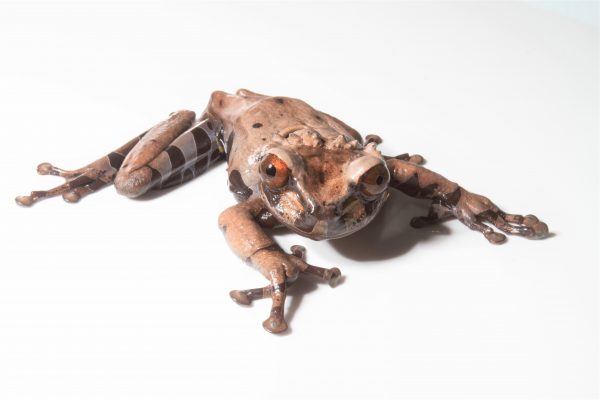
A Crowned treefrog Anotheca spinosa This species lives in the rainforest canopy and breeds in treeholes where the mother lays unfertilized eggs to feed her tadpoles.

The lemur leaf frog Agalychnis lemur. Wild populations have been decimated in the wild due to the amphibian chytrid fungus.
After obtaining permits from the Panamanian Ministry of Agriculture and the Ministry of Environment, and well as the US Department of Agriculture and the Fish and Wildlife Service, the frogs were flown back to Panama on May 16, 2018. The frogs were packed to IATA specifications (In delicups with damp moss, artificial leaves and packed in a cooler with Phase 22 thermal regulating packs). The frogs all made the trip in good health and are now being held in a quarantined shipping container at the Panama Amphibian Rescue and Conservation Project in Gamboa. After a quarantine period, we will breed these animals with the captive-breeding stock already in Panama.
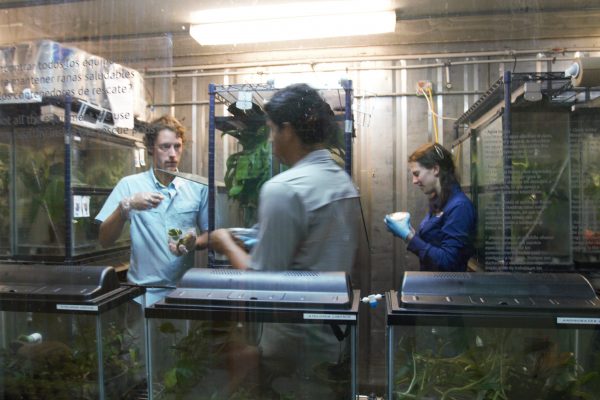
Elliott Lassiter, Jorge Guerrel (Smithsonian Tropical Research Institute) and Chelsea Thomas (Atlanta Botanical Gardens) unpack frogs inside a quarantined shipping container in Gamboa.
Visitors to the center can see frogs through a display window as part of a miniature exhibition.
The 14 years of investment, and dedicated conservation efforts at the Atlanta Botanical Gardens will significantly improve the genetic population management goals for both of these species in Panama, bringing the original ARCC project full circle.
It’s time to buy your tickets for La Dorada trail run
Join us on August 13 for the annual golden frog run hosted by Caminando Panama. More info on tickets here.

